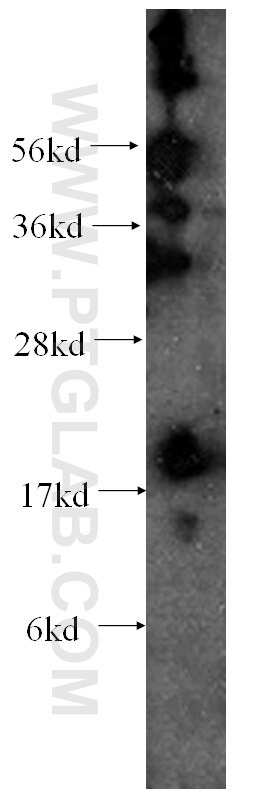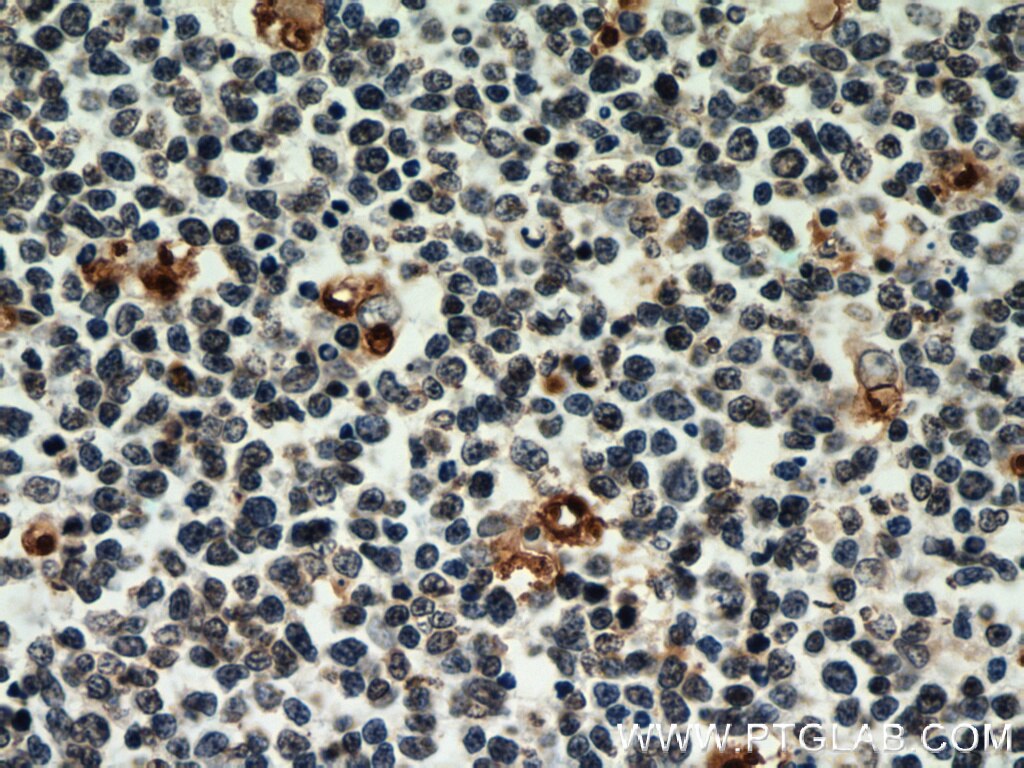Published Applications
| IHC | See 1 publications below |
Product Information
60025-2-Ig targets CIRBP in IHC, ELISA applications and shows reactivity with human, mouse samples.
| Tested Reactivity | human, mouse |
| Cited Reactivity | human |
| Host / Isotype | Mouse / IgM |
| Class | Monoclonal |
| Type | Antibody |
| Immunogen |
CatNo: Ag0280 Product name: Recombinant human CIRBP protein Source: e coli.-derived, PGEX-4T Tag: GST Domain: 1-172 aa of BC000403 Sequence: MASDEGKLFVGGLSFDTNEQSLEQVFSKYGQISEVVVVKDRETQRSRGFGFVTFENIDDAKDAMMAMNGKSVDGRQIRVDQAGKSSDNRSRGYRGGSAGGRGFFRGGRGRGRGFSRGGGDRGYGGNRFESRSGGYGGSRDYYSSRSQSGGYSDRSSGGSYRDSYDSYATHNE Predict reactive species |
| Full Name | cold inducible RNA binding protein |
| Calculated Molecular Weight | 172 aa, 19 kDa |
| Observed Molecular Weight | 19 kDa |
| GenBank Accession Number | BC000403 |
| Gene Symbol | CIRBP |
| Gene ID (NCBI) | 1153 |
| Conjugate | Unconjugated |
| Form | Liquid |
| Purification Method | Thiophilic affinity chromatograph |
| UNIPROT ID | Q14011 |
| Storage Buffer | PBS with 0.02% sodium azide and 50% glycerol, pH 7.3. |
| Storage Conditions | Store at -20°C. Stable for one year after shipment. Aliquoting is unnecessary for -20oC storage. 20ul sizes contain 0.1% BSA. |
Background Information
CIRBP, also named as A18HNRNP and CIRP, is a cold-inducible mRNA binding protein that plays a protective role in the genotoxic stress response by stabilizing transcripts of genes involved in cell survival. CIRBP is also involved in cap-independent translation upon moderate cold-shock. It acts as a translational activator. CIRBP is a suppressive rather stimulatory effect on proliferation. It acts as a translational repressor. CIRBP is an immortalized gene in murine primary cells. CIRBP promotes assembly of stress granules (SGs), when overexpressed. It is a potential proto-oncogenic proteins upon overexpression.(PMID:19900510) Suppression of CIRBP increased the apoptotic cell population of neural stem cells at moderate low temperature. (PMID:20735994) This antibody can bind the close sequences genes. This antibody is a mouse monoclonal antibody raised against full length CIRBP of human origin.
Protocols
| Product Specific Protocols | |
|---|---|
| IHC protocol for CIRBP antibody 60025-2-Ig | Download protocol |
| WB protocol for CIRBP antibody 60025-2-Ig | Download protocol |
| Standard Protocols | |
|---|---|
| Click here to view our Standard Protocols |
Publications
| Species | Application | Title |
|---|---|---|
Front Pharmacol Hypothermic Shock Applied After Perinatal Asphyxia Prevents Retinal Damage in Rats. | ||
PLoS One Cold Shock Proteins Are Expressed in the Retina Following Exposure to Low Temperatures. | ||
Ann Dermatol Expression of Cold-Inducible RNA-Binding Protein in Normal Skin, Actinic Keratosis and Squamous Cell Carcinoma. |






